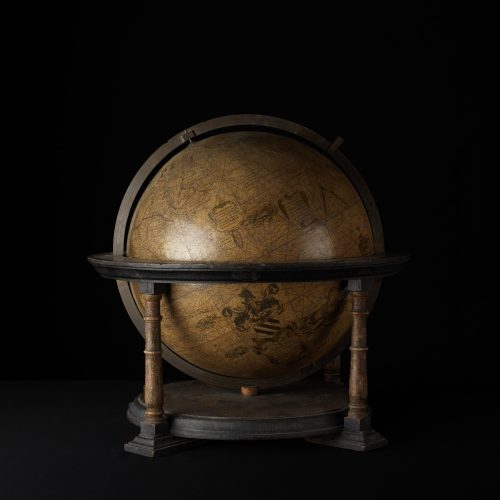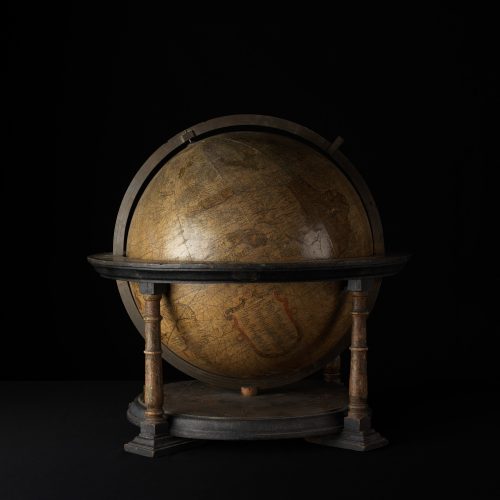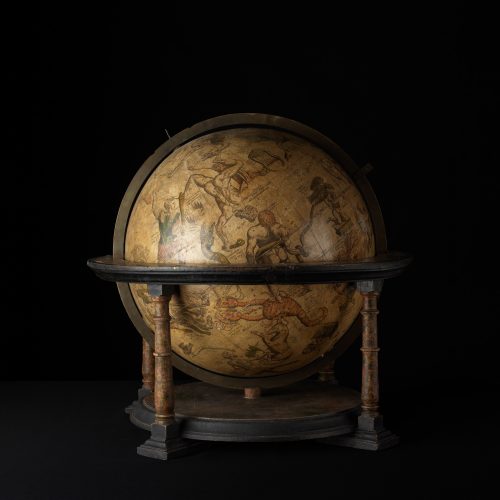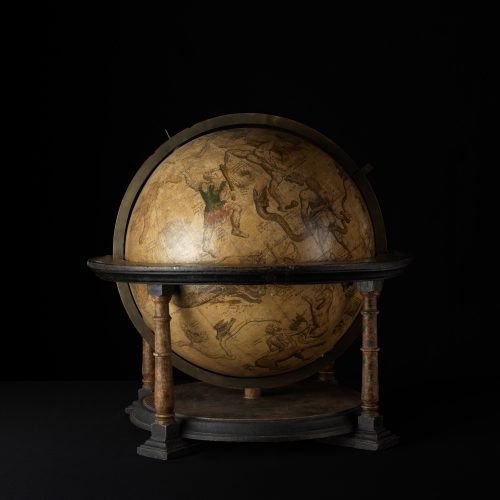Capturing the globes in images
In 2011 and 2012, Laurent Dubois of the Cantonal and University Library of Lausanne at Dorigny (BCUL-D) photographed the Mercator globes in high definition. Comprehensive pictures and a series of close-ups of the globes were taken at the request of Prof Georges Meylan, who created the first website presentation with the help of a number of students.
- © Laurent Dubois BCUL
- © Laurent Dubois BCUL
- © Laurent Dubois BCUL
- © Laurent Dubois BCUL
Photographing the globes was a delicate operation, not least because of their spherical shape, which posed major challenges in terms of field loss. Moreover, the varnish made it necessary to use diffuse lighting for better legibility. To take these pictures in good conditions, certain parameters had to be combined :
Disposition
The spheres were removed from their stands and set into hemispheric blocks of foam. This made it possible to hold them in place while still allowing the photographer considerable rein in rotating them to capture the required views.
Depth of field
To reach the best depth of field the photos were taken horizontally, exactly on the subject’s axis. Since the camera remained in a fixed position, the globes had to be rotated to adjust the subject in the axis of the lens very precisely. This could be done thanks to the foam blocks. The equipment had to allow for macro photography.
Find out more
- Computer-generated images in 3D : with 3D modelling it is possible to view the globes dynamically, make corrections and obtain different types of representation.



